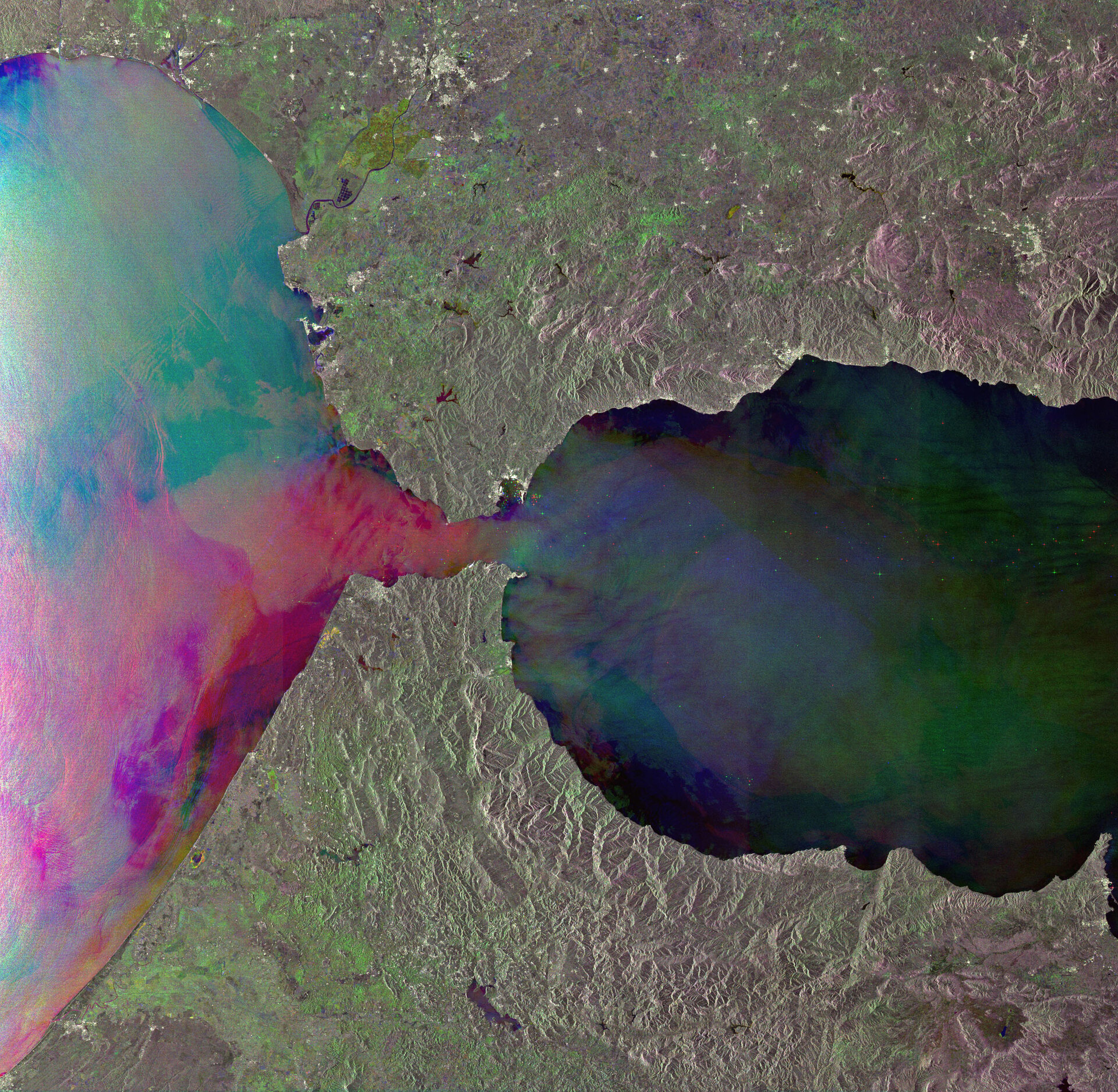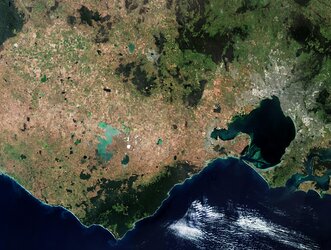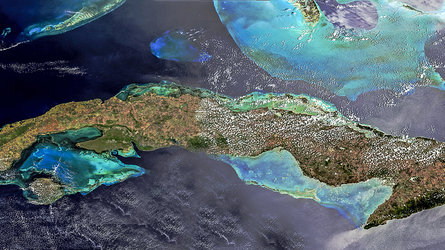Earth from Space: Convergence of continents and currents
This Envisat radar image shows internal waves in the Strait of Gibraltar, between the southern coast of Spain (top) and the northern coast of Morocco. The strait is the only connection between the Atlantic Ocean (left) and the Mediterranean Sea (right), making it a place of intense study in order to understand the exchange of water between the two.
As water flows into and out of the Mediterranean, two currents are formed in the strait. An upper layer of Atlantic water flows eastward into the sea over a lower layer of saltier and heavier Mediterranean water flowing westward into the ocean.
The lower current is called the Mediterranean Outflow water. As it leaves the Mediterranean near the strait’s western end, it flows over a sudden rise in the sea floor, generating a series of internal waves.
Internal waves are not directly visible to the observer because they do not result in large undulations on the sea surface; instead, they induce a horizontal surface current, which changes the surface roughness of the sea.
From space, internal waves can be detected very efficiently using Synthetic Aperture Radar (SAR) instruments that are sensitive to changes in the small-scale surface roughness on the ocean surface.
Internal waves in this image show up as a semi-circular rippled pattern east of the strait’s entrance in the Mediterranean Sea. Additional sets of internal waves generated in the Atlantic Ocean are visible as dark pink lines on the western side of the strait.
With hundreds of vessels passing through daily, the strait is one of the busiest shipping routes in the world. The main shipping lanes can be seen through the concentration of ships (colourful points) in distinct channels.
Several cities are visible in Spain (all as patches of light green), including the British oversees territory of Gibraltar (semi-circle at the entrance to the Strait of Gibraltar), Malaga (on the coast about 100 km east of Gibraltar), Granada (northeast of Malaga) and Seville (left of centre top). The Spanish autonomous city of Ceuta is on the coast in North Africa, directly across from Gibraltar.
This image was created by combining three Envisat SAR acquisitions (12 August 2010, 1 October 2009 and 27 August 2009) over the same area. The colours result from changes in the surface between acquisitions.






